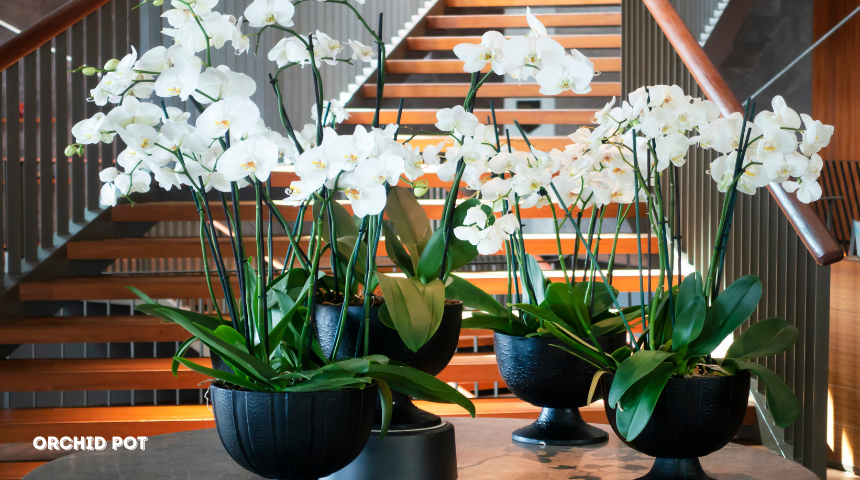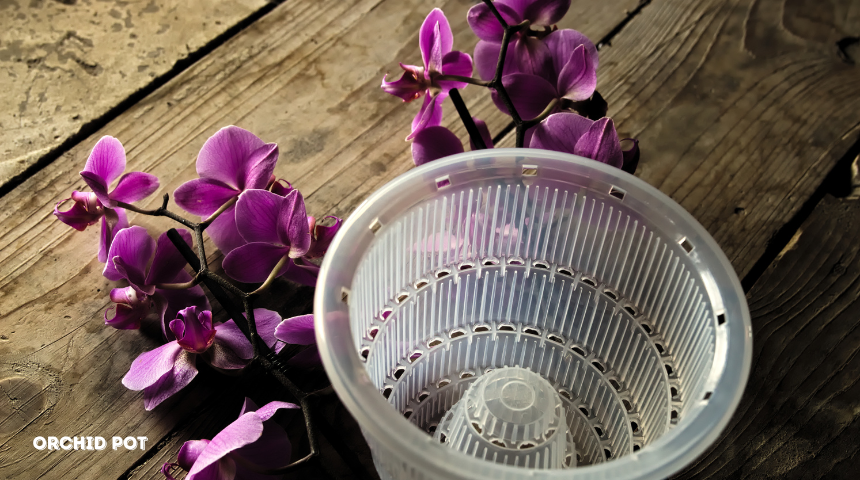Welcome, plant enthusiasts’ friends! Have you ever wondered why do orchid pots have holes? As an avid gardener and botany enthusiast, I’ve delved into the intricate world of plant care to unravel this mystery.
The answer lies in these holes’ vital role in the health and vitality of these delicate, beautiful flowers. Join me on this journey as we uncover the fascinating reasons behind the presence of these essential holes in orchid pots.
Why Do Orchid Pots Have Holes
Orchid pots have holes for one primary reason: aeration. These holes facilitate airflow to the orchid’s roots, preventing them from sitting in stagnant water. This aerated environment is crucial as it helps to prevent root rot, a common issue for orchids.
Additionally, these holes aid in drainage, allowing excess water to escape, and ensuring the roots don’t become waterlogged. Essentially, the holes in orchid pots maintain a healthy balance of moisture and oxygen, vital for the orchid’s well-being.
How Orchids Grow in Nature?
In nature, orchids grow in various environments, from tropical rainforests to deserts. They’re often found clinging to trees or nestled in the ground.
Orchids have adapted to diverse habitats, using different strategies to thrive. Some species are epiphytes, anchoring themselves on trees, while others are terrestrial, growing in soil.
Their roots are designed to absorb moisture and nutrients efficiently. Orchids also rely on symbiotic relationships with fungi for growth, forming mycorrhizal associations that aid in nutrient uptake.
Their unique growth patterns and adaptability have made them one of the most diverse and fascinating plant families in the world.

Air Or Land Orchid: What Do You Have?
As an orchid enthusiast, I have both air and land orchids in my collection.
The diversity within the orchid family allows me to enjoy the beauty of terrestrial orchids, which grow in soil, and the elegance of epiphytic orchids, which thrive in the air by clinging to trees or other surfaces.
Each type brings its own charm and care requirements. While terrestrial orchids are familiar, epiphytic orchids require a different approach, often needing proper air circulation and a well-draining environment.
Why Do Orchids Have Holes In Their Pots? The Top 5 Ideas Are Below
Discover why orchid pots have holes and how they benefit your plants. Learn the key reasons for better growth and orchid health.
1. Aeration Importance
Holes in orchid pots ensure adequate aeration for the roots. Oxygen is crucial for root health, and these holes facilitate the necessary gas exchange. Roots can suffocate and decay without proper aeration, leading to plant stress or death.

2. Drainage Efficiency
The holes in orchid pots serve as drainage outlets. They prevent water from pooling at the bottom, avoiding waterlogging. Effective drainage is vital as excessive moisture can cause root rot, a common problem among orchids.
3. Preventing Salt Build-Up
These holes aid in flushing out excess salts. When orchids are watered, minerals in the water can accumulate in the soil over time. The holes allow the salts to leach out, preventing build-up that could harm the roots.

4. Root Health and Growth
Optimal aeration and drainage provided by the holes contribute to healthy root development. Healthy roots lead to robust growth and better nutrient absorption, ultimately resulting in stronger, more vibrant orchids.
5. Mimicking Natural Environment
In the wild, orchids grow in environments with ample airflow around their roots. The holes in orchid pots aim to replicate this natural habitat, ensuring the plants receive conditions akin to their native settings, promoting overall health and flourishing blooms.
Do All Orchid Varieties Need Pots with Holes?
Not necessarily. While many orchid varieties benefit greatly from pots with holes, some can tolerate or even prefer different conditions.
Certain orchids, like some terrestrial species, may thrive in pots without holes as they prefer consistently moist soil.
However, most orchids, especially epiphytic varieties, greatly benefit from pots with adequate drainage holes to prevent root rot and maintain proper aeration.
It’s essential to understand the specific needs of each orchid variety to provide the best-growing conditions for their health and growth.
The Best Plant Medium to Use in Orchid Pots
The best plant medium for orchid pots largely depends on the orchid type and its specific requirements. However, a commonly preferred medium is orchid bark, which provides excellent aeration and drainage for most orchids, especially epiphytic varieties.
Another popular choice is sphagnum moss, which retains moisture well but still allows for good airflow. It’s suitable for orchids that prefer slightly more moisture around their roots.
For terrestrial orchids, a mixture of orchid bark, perlite, and potting soil can balance drainage and nutrients.

Orchid Pot Materials
Terra-Cotta Orchid Pots
Breathability: Terra-cotta pots offer good breathability, allowing air to reach orchid roots, and aiding in aeration.
Moisture Regulation: They absorb excess moisture, preventing waterlogging, but may require more frequent watering due to their porous nature.
Plastic Orchid Pots
Durability and Lightweight
Plastic pots are durable, lightweight, and less prone to breakage, offering longevity.
Moisture Retention
They retain moisture well, suitable for orchids that prefer a slightly more consistent moisture level.
Ceramic Orchid Pots
Aesthetics and Weight: Ceramic pots are visually appealing and heavier, providing stability for taller orchids.
Less Porous: They are less porous compared to terra-cotta, retaining moisture better but requiring attentive drainage.
Mesh Orchid Pots
Excellent Drainage: Mesh pots offer superb drainage, allowing excess water to escape quickly, and preventing waterlogging.
Air Circulation: They provide ample airflow to roots, contributing to better aeration, but may require more frequent watering.
Best Size for Orchid Pots
Snug Fit: Opt for a pot that accommodates the roots comfortably without leaving excessive space to prevent over-moistening.

Room for Growth: Choose a pot that allows for some growth space, typically about an inch or two in diameter larger than the root ball, promoting healthy growth without overwhelming the orchid.
Does Pot Color Matter?
Yes, pot color can impact orchids, albeit indirectly. Lighter-colored pots reflect more sunlight, helping to keep the roots cooler in warmer climates.
In contrast, darker pots absorb more heat, which can warm the roots, beneficial in cooler environments. The choice of pot color can assist in regulating the root temperature, affecting overall orchid health, especially in varying climates or indoor settings.
FAQ
Why do orchid pots need holes?
Holes in orchid pots ensure proper aeration and prevent root rot by allowing excess water to drain.
Can’t I use pots without holes for orchids?
You can, but orchids generally thrive better in pots with holes to avoid waterlogging and provide essential oxygen to the roots.
How do the holes help orchids?
They promote healthy root growth by maintaining a well-aerated environment and preventing water stagnation.
Should I cover the holes in orchid pots?
No, covering the holes can hinder airflow and drainage, potentially harming the orchid’s roots.
Can I add more holes to my orchid pot?
It’s possible, but it’s essential to ensure a balance; too many holes might cause excessive drainage, impacting the orchid’s moisture levels.
Conclusion
In unraveling the mystery behind orchid pots and their essential holes, we’ve discovered a vital aspect of orchid care. These tiny perforations aren’t just random; they’re the unsung heroes ensuring our orchids thrive.
From aeration to drainage, these holes play a pivotal role in maintaining a healthy root environment. Remember, understanding why orchid pots have holes isn’t just about the pots—it’s about fostering an environment where our beloved orchids can flourish.
So, next time you admire those gorgeous blooms, know that those little holes are silently doing their part in nurturing these beautiful wonders of nature. Happy orchid growing!



